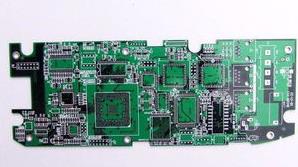In order to ensure the quality of the finished product of the PCB circuit boards, reliability and adaptability tests are required. The temperature resistance test of the PCB circuit board is to prevent the PCB circuit board from exploding, blistering, delamination and other adverse reactions at excessively high temperatures, resulting in poor product quality or direct scrapping, which is a problem that needs attention. So what is the temperature resistance of the PCB circuit board and how to do the heat resistance test?
The temperature problem of the PCB circuit board is related to the temperature of the raw materials, solder paste, and surface parts. Usually the PCB circuit board can withstand a temperature of up to 300 degrees for 5-10 seconds; the temperature of the lead-free wave soldering is about 260, and the lead is about It is 240 degrees.
PCB circuit board heat resistance test:
1. First prepare PCB circuit board production board and tin furnace.
Sampling 10*10cm substrate (or laminated board, finished board) 5pcs; "(The copper-containing substrate has no blistering and delamination phenomenon).
Substrate: more than 10cycle; laminated board: more than LOWCTE15010cycle; more than 10cycle of HTg material;
Normal material is more than 5cycle.

Finished board: LOWCTE1505cycle or more; HTg material or more 5cycle; Normal material or more 3cycle.
2. Set the tin furnace temperature to 288+/-5 degrees, and use contact temperature measurement to calibrate;
3. Dip the flux with a soft brush first, smear it on the surface of the board, then use the crucible tongs to take the test board and immerse it in the tin furnace, take it out for 10 seconds and cool it to room temperature, visually check whether there is any bubbling and exploding board, this is 1 cycle ;
4. If there is a problem of blistering and exploding board, immediately stop the immersion tin and analyze the initiation point f/m. If there is no problem, continue the cycle until the board explodes, with 20 times as the end point;
5. The blistering part needs to be sliced and analyzed, to understand the source of the detonation point, and to take pictures.
The above introduction is about the temperature resistance of PCB circuit boards, I believe everyone has a good understanding. PCB circuit boards will produce some undesirable problems at overheated temperatures. Therefore, it is necessary to understand in detail what the temperature resistance of PCB circuit boards of different materials is, and do not exceed the maximum temperature limit, so as to avoid PCB circuit boards from being scrapped and increasing. cost.
What should be the baking time and temperature of the circuit board
Before the SMT chip processing plant goes online, the circuit boards need to be baked. If the circuit board is vacuum packaged correctly, the circuit board can be assembled without baking. If it has been placed for a period of time, it is recommended to bake at 120-130°C for about 40-60 minutes, which may be the appropriate temperature and time, but it must also depend on the metal surface treatment. Some treatments are not suitable for baking at all.
IPC does not have these regulations, because there are too many changes in products, materials, etc., and it is impossible to formulate rules at all. 120-130°C is set because the water volatilization temperature is 100 degrees, and 40-60 minutes is because of previous experience that the water content of FR4 materials can be reduced to a very low stable value under this condition.
Generally, if baking can be added before assembly of the circuit board, it should reduce the risk of moisture residue and board explosion. But because of the diversification of current circuit board metal treatment methods, some treatments are not suitable for baking, so no one stipulates that baking must be done. Moreover, most circuit board manufacturers hope to assemble the circuit board without baking, which saves trouble. But it must be noted that if it is a soft board material that is easy to absorb water, it is best to bake it. In addition, even if the packaging is good, if it is left in a non-dry environment for a long time, it is best to bake and then assemble it, otherwise it will easily cause problems. However, it should be baked as long as it is opened, because the material properties and environmental factors have too much influence, and there is no way to set a standard.
Assuming that silver or organic solder mask is used for metal treatment, it is difficult to require baking before assembly, because baking does have the opportunity to destroy the protection of the copper surface and affect the solderability of the circuit board. The above is for your reference.